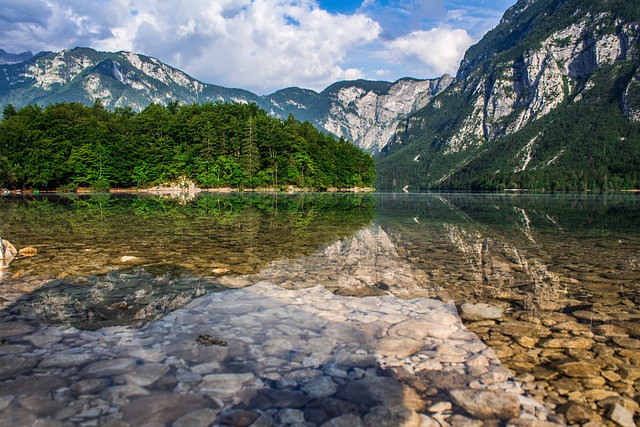
Discovering the Julian Alps: A Unique Alpine Gem
Introduction
When we think of the majestic Alps, images of Switzerland, France, and Austria often come to mind. However, nestled in the heart of Europe lies a lesser-known gem – the Julian Alps. These breathtaking mountains, located in Slovenia, offer a distinct experience that sets them apart from their Italian and Austrian counterparts. In this blog post, we will delve into the enchanting world of the Julian Alps and explore what makes them stand out in the Alpine landscape.
**1. Location and Geography**
The Julian Alps are situated in the northwest of Slovenia, bordering Italy and Austria. Their location gives them a unique blend of cultural influences, creating a rich tapestry of history, languages, and traditions. This region has been shaped by centuries of cross-cultural exchanges, resulting in a one-of-a-kind alpine experience. It is Unique.
**2. Biodiversity and Natural Beauty**
The Julian Alps boast a remarkable biodiversity, with lush forests, pristine lakes, and diverse wildlife. Triglav National Park, named after Slovenia’s highest peak, Mount Triglav, is the beating heart of this natural wonderland. The park is home to captivating landscapes, including the iconic Lake Bled and Lake Bohinj, both surrounded by emerald waters and picturesque villages.
**3. Mountaineering and Outdoor Adventures**
While the Italian and Austrian Alps are renowned for their mountaineering traditions, the Julian Alps offer an equally challenging and rewarding experience for outdoor enthusiasts. Hiking, climbing, and via ferrata routes cater to adventurers of all levels. Triglav, standing at 2,864 meters, is a coveted peak for mountaineers, offering stunning panoramic views from its summit. Yet you can walk to the top of Mount Triglav, I know because I have done it.
**4. Cultural Heritage**
The Julian Alps are steeped in history and culture, with charming alpine villages that maintain their traditional way of life. The region’s architecture, cuisine, and festivals reflect a blend of Slavic, Austrian, and Italian influences, creating a unique cultural mosaic.
**5. Pristine Lakes**
One of the standout features of the Julian Alps is its collection of pristine glacial lakes. Lake Bled, with its iconic island church and medieval castle, is a renowned gem. Lake Bohinj, surrounded by dense forests and overlooked by the Julian Alps, offers a tranquil retreat for nature lovers.
**6. Accessibility**
The Julian Alps are easily accessible from major European cities, including Ljubljana, the capital of Slovenia. This accessibility makes them an ideal destination for travelers seeking a taste of alpine beauty without the crowds often found in more popular alpine regions.
**7. Unique Character**
What truly sets the Julian Alps apart is their unique character. While the Italian and Austrian Alps are celebrated for their glamour and world-class skiing resorts, the Julian Alps offer a quieter, more introspective alpine experience. The region invites travelers to connect with nature, discover its rich history, and immerse themselves in the local culture.
Conclusion
The Julian Alps are a hidden treasure waiting to be explored by adventurers, nature enthusiasts, and cultural travelers alike. Their distinct location, natural beauty, cultural richness, and accessibility make them a unique alternative to the more famous Alpine destinations in Italy and Austria. Whether you’re seeking an alpine challenge, a tranquil retreat, or a cultural journey, the Julian Alps have something special to offer. Experience the magic of these lesser-known mountains and discover the true essence of the Alpine spirit.
I have visited the Julian Alps and they are well worth the time and trouble to visit and stay for a few days to enjoy the alpine air and scenery.

